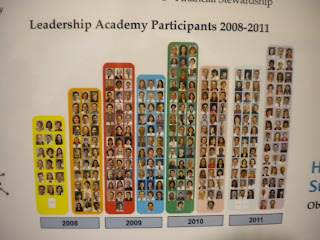Medscape Today has an article featuring "The Most Significant Medical Advances and Events in 2011." The list includes things like some FDA drug warnings; the fact that the Supreme Court will review the health care reform law; some finding about cellular phone use and brain activity; withdrawal of propoxyphene from the market; and new listings of top hospitals.
To which I say, "Bah, humbug!" Most of the things mentioned have had and will have little or no impact on you, me, our relatives and friends as we seek to get care or avoid care.
What are the most significant advances and events? They are the ones that have occurred by communities, patients, and clinicians in their home towns or their home regions that demonstrate the potential for real improvement in clinical care. These are the ones that save lives now. These are the ones that empower patients to be true partners with their caregivers and vice versa. These are the ones that have nothing to do whatsoever with government mandates, accreditation actions, and the like.
These are the ones that occur because, by strategy or opportunism, well intentioned and thoughtful people modestly work together to reorganize the work in hospitals and other settings.
Examples from this blog are:
1 -- A patient named Christian who persuaded a nurse to allow him to administer his own dialysis, and who then trained others, transforming care in a Swedish hospital.
2 -- Peter Pronovost and colleagues document that reducing central line infection rates in Michigan also lowered costs.
3 -- Glen Cove hospital achieves 1223 patient days without a central line infection.
4 -- The one million people of Saskatchewan allocate $5 million per year of government funds to establish and maintain a Health Quality Council, an independent agency that measures and reports on quality of care in Saskatchewan, promotes improvement, and engages its partners in building a better health system.
5 -- The University of Michigan Health System demonstrates the power of adopting a Lean process improvement philosophy and generously shares its experience with the world.
6 -- Jeroen Bosch Hospital in the Netherlands celebrates the opening of a new building by enthusiastically endorsing transparency of clinical outcomes.
7 -- Aided by the Vermont Oxford network, thousand of neonatologists create state consortia to to set statewide targets and objectives, compare best practices, and understand the variability in clinical practices across and within institutions.
8 -- The SCAD ladies band together and influence the direction of medical research.
9 -- The Sepsis Alliance presses for greater awareness of this deathly clinical syndrome.
10 -- The Manukau District Health Board in New Zealand propounds the following philosophy:
What we need to do if something goes wrong is pull back from the instinct to place blame and instead think more deeply about the contributing factors. We need to think about how the system got us to where we are and where the faults in it lie.
What we need to do if something goes wrong is pull back from the instinct to place blame and instead think more deeply about the contributing factors. We need to think about how the system got us to where we are and where the faults in it lie.































